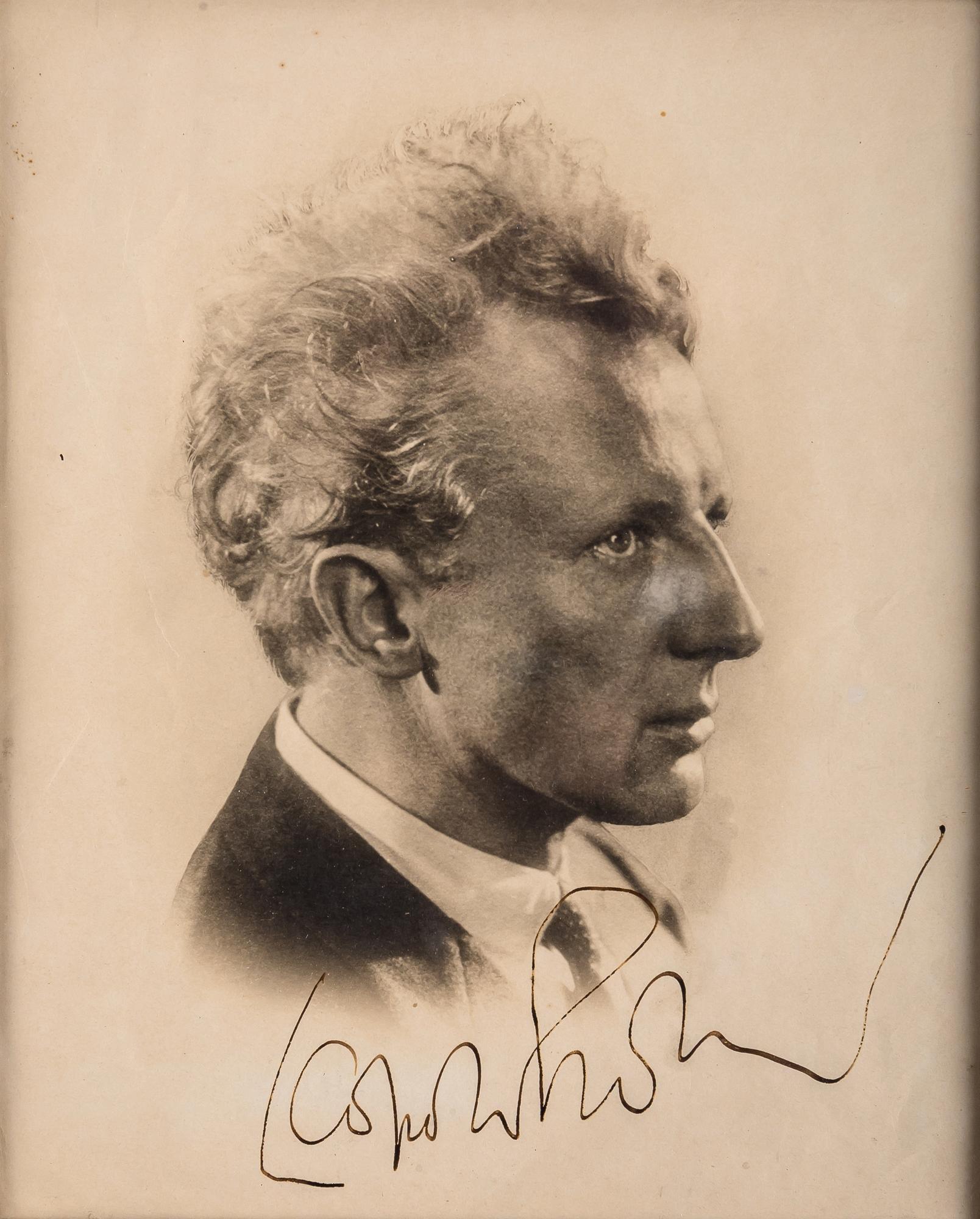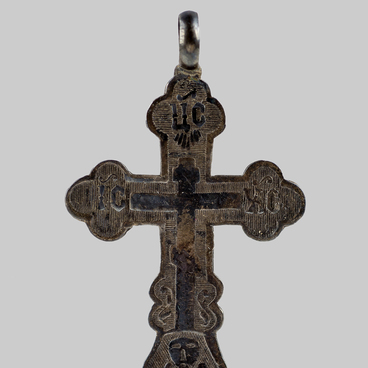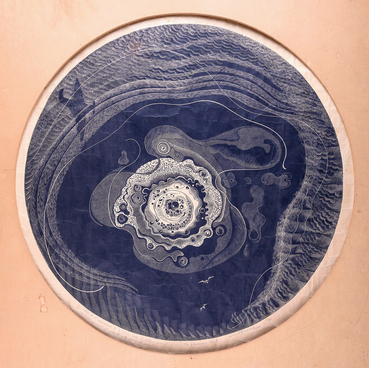The photo portrays LeopOld StokOwski, who lived between 1882 and 1977, one of the most prominent conductors of the 20th century. From 1912 to 1936, he directed the Philadelphia Symphony Orchestra, one of the best orchestras in the world.
Sergei Eisenstein and StokOwski first met in Mexico in 1931. StokOwski and a young Mexican composer and activist CArlos ChAvez visited Eisenstein at the ¡Que Viva México! filming location to discuss the score for the future movie track. When Stokowski heard Eisenstein’s idea of the movie, he “was ready to fly even to the Sahara” to direct the sound. The movie, however, was never finished because Eisenstein had to urgently return to the Soviet Union. Stokowski and Chavez invited Sergei Eisenstein to come to Philadelphia on March 31, 1932, for the world premiere of Chavez’s ballet Horsepower. The scenic designer for the production was Diego Rivera. In Eisenstein’s library, there is a playbill for that premiere. The director supposedly managed to arrive in Philadelphia, and it was allegedly there that the conductor gave him his signed photo.
Eisenstein was particularly fascinated by the new way Stokowski seated the musicians in the orchestra and the way he made sound recordings using several microphones: in Disney’s Fantasia (1940), in particular. In 1943, Stokowski sent his recently published book Music for All of Us (1963) to Almaty, where Eisenstein was shooting Ivan the Terrible. The book was accompanied by a letter expressing his hope to meet Eisenstein in Russia right after the war to discuss the idea of ‘a movie with music.’ This letter is kept in the Film Museum. Unfortunately, it is yet to be determined which movie the conductor was intending to offer for collaboration.
This photo of conductor LeopOld StokOwski was taken by Edward StEichen, who lived between 1879 and 1973, an American photographer and critic, one of the most insightful, influential, and successful masters of photography of the 20th century. He worked in many genres and pioneered fashion photography. Steichen was the director of the photography department at the Museum of Modern Art in New York, where he supervised many exhibitions, including the most famous one, The Family of Man, which is still on display. Looking at the photo of Stokowski, you can see how skillfully Steichen used the lighting, perspective, and processing of the photo paper to create an image of a romantic and tempered conductor.
Sergei Eisenstein and StokOwski first met in Mexico in 1931. StokOwski and a young Mexican composer and activist CArlos ChAvez visited Eisenstein at the ¡Que Viva México! filming location to discuss the score for the future movie track. When Stokowski heard Eisenstein’s idea of the movie, he “was ready to fly even to the Sahara” to direct the sound. The movie, however, was never finished because Eisenstein had to urgently return to the Soviet Union. Stokowski and Chavez invited Sergei Eisenstein to come to Philadelphia on March 31, 1932, for the world premiere of Chavez’s ballet Horsepower. The scenic designer for the production was Diego Rivera. In Eisenstein’s library, there is a playbill for that premiere. The director supposedly managed to arrive in Philadelphia, and it was allegedly there that the conductor gave him his signed photo.
Eisenstein was particularly fascinated by the new way Stokowski seated the musicians in the orchestra and the way he made sound recordings using several microphones: in Disney’s Fantasia (1940), in particular. In 1943, Stokowski sent his recently published book Music for All of Us (1963) to Almaty, where Eisenstein was shooting Ivan the Terrible. The book was accompanied by a letter expressing his hope to meet Eisenstein in Russia right after the war to discuss the idea of ‘a movie with music.’ This letter is kept in the Film Museum. Unfortunately, it is yet to be determined which movie the conductor was intending to offer for collaboration.
This photo of conductor LeopOld StokOwski was taken by Edward StEichen, who lived between 1879 and 1973, an American photographer and critic, one of the most insightful, influential, and successful masters of photography of the 20th century. He worked in many genres and pioneered fashion photography. Steichen was the director of the photography department at the Museum of Modern Art in New York, where he supervised many exhibitions, including the most famous one, The Family of Man, which is still on display. Looking at the photo of Stokowski, you can see how skillfully Steichen used the lighting, perspective, and processing of the photo paper to create an image of a romantic and tempered conductor.




